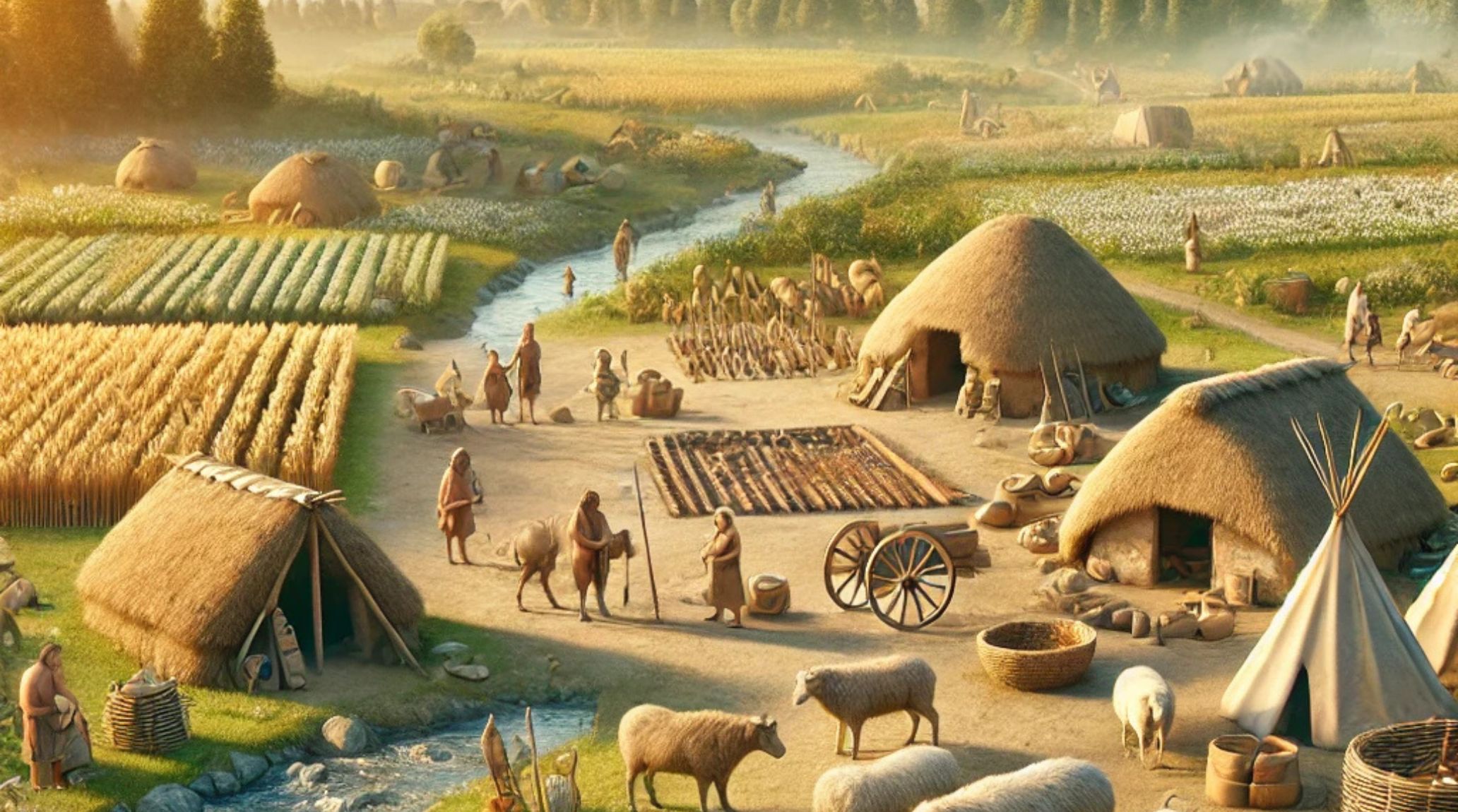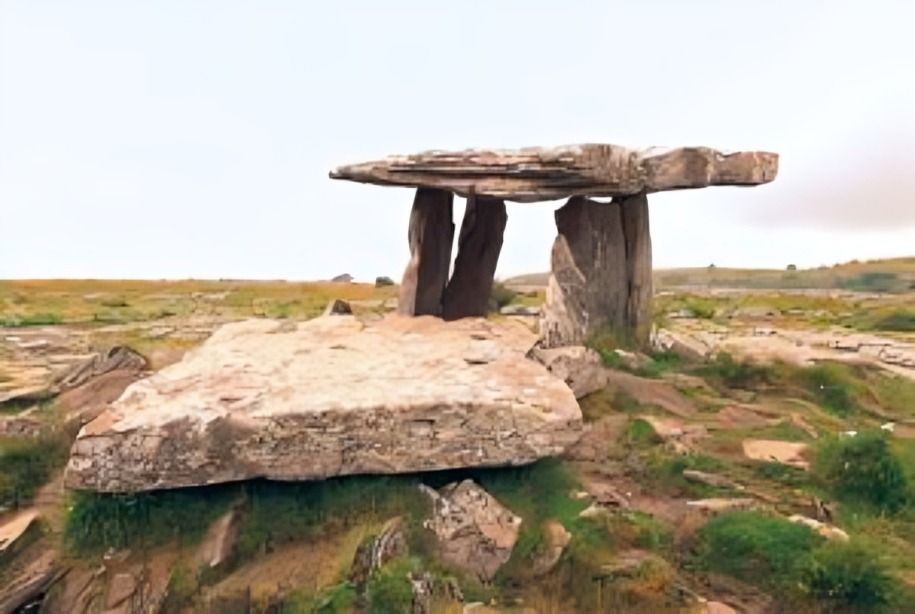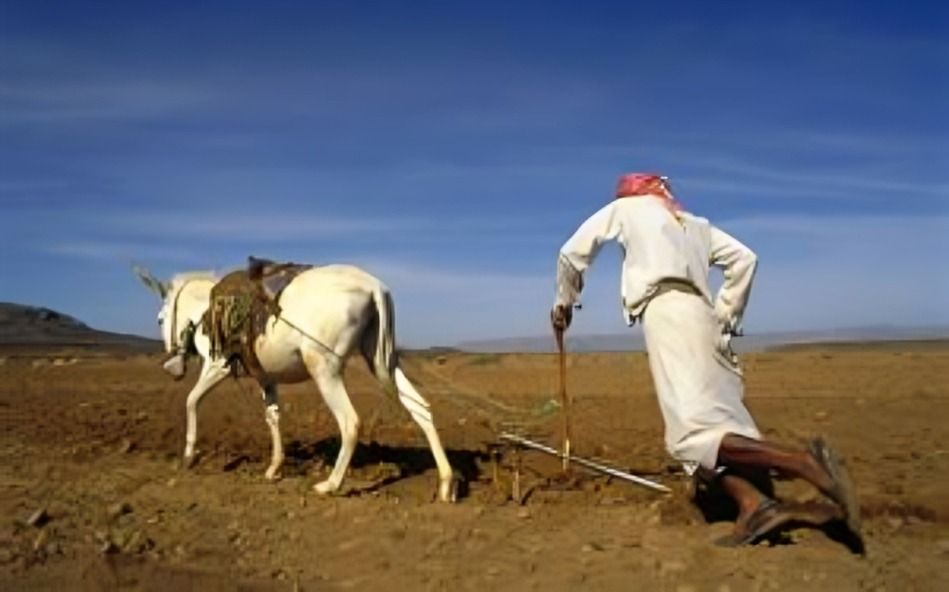
“
The Legacy of the Neolithic Era continues to influence our lives today, marking a pivotal point in human history. This blog presents 20 facts about The Legacy of the Neolithic Era, showcasing how the transition from hunter-gatherer societies to agricultural communities laid the foundation for modern civilization. From advancements in farming techniques to the development of social structures and permanent settlements, the Neolithic Era transformed human existence. Understanding this legacy helps us appreciate the innovations and cultural shifts that emerged during this time and how they continue to shape our world today.1
”
The Neolithic Era sparked the Agricultural Revolution, shifting humanity from nomadic lifestyles to settled farming, fundamentally transforming living conditions and social interactions in early human communities.1
Domestication of key plants like wheat and barley, alongside animals such as goats, revolutionized food production, establishing agricultural practices that continue to shape our diets today.2

Megalithic structures, such as Stonehenge, showcase the architectural ingenuity of Neolithic communities, serving as cultural and astronomical landmarks that reflect humanity’s quest for understanding and connection.
Property ownership began to emerge as settled farming created boundaries, influencing social structures and leading to the establishment of complex societies that shaped future civilizations.3
Neolithic trade networks expanded as communities exchanged surplus goods, promoting cultural diffusion and cooperation, which laid the groundwork for the intricate economic systems we recognize today.4
Advancements in crop rotation and irrigation techniques transformed farming, significantly increasing food production, which contributed to population growth and the complexity of Neolithic societies.5
Religious beliefs evolved, with rituals centered around agriculture and fertility, leading to sacred sites and early organized religions that would shape future spiritual practices across cultures.6

Art flourished during this era, with pottery and figurines emerging as expressions of creativity, providing valuable insights into Neolithic life, beliefs, and the human experience.
Innovative tools, such as sickles and grinding stones, revolutionized food production, enabling Neolithic societies to thrive and set the stage for future technological advancements.7
Neolithic social structures grew more defined, as leaders emerged to manage resources, establishing governance systems that influenced political organization and societal stability for generations.8

Textile production advanced significantly, with sheep domestication leading to wool creation, impacting clothing and trade, and influencing cultural practices that persist in modern societies.
Emerging writing systems in the Neolithic began as record-keeping methods to track agricultural yields and trade, shaping communication and administration in subsequent civilizations.9
Trade routes developed during this era facilitated cultural interaction, promoting the exchange of ideas and technologies that shaped art, architecture, and social practices across regions.10
Community cooperation flourished, as families and clans worked together to cultivate land and share resources, establishing social bonds that laid the foundation for communal living.11
Agricultural surplus supported specialized occupations, allowing individuals to focus on crafts and governance, contributing to the economic complexity that characterized advanced Neolithic societies.12
Neolithic innovations in agriculture and animal husbandry left lasting impacts on biodiversity, as the domestication of specific plants and animals shaped modern agricultural practices and our relationship with nature.13
The establishment of permanent settlements during the Neolithic allowed for complex social structures, leading to the emergence of leadership roles that influenced governance and community dynamics.14

Neolithic people developed early forms of agriculture, experimenting with various techniques that led to the creation of diverse crop varieties, ultimately laying the groundwork for the global agricultural practices we rely on today.
Neolithic art, including intricate cave paintings and beautifully crafted pottery, reflects the rich spiritual and cultural beliefs of early communities, offering invaluable insights into their daily lives, social structures, and values that shaped their world.15
The shift to farming created surpluses, which facilitated trade not just locally but over long distances, fostering interconnectedness that laid the foundation for modern economies.16


